Your Cart is Empty
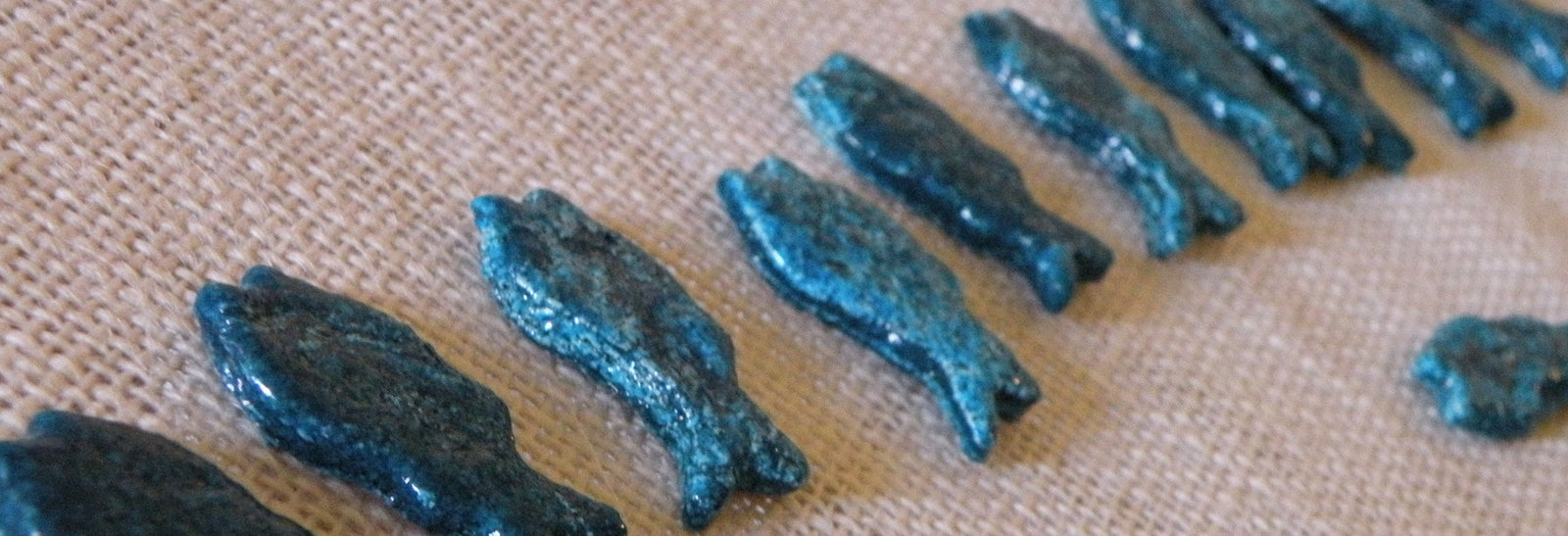
How To Make Egyptian Paste
August 13, 2010 2 Comments

Perhaps I should have called this post something else, like My Egyptian Paste Results, My Egyptain Paste Experiment, because this is me trying out Mitsy’s tutorial from back in April, entitled How to Make Egyptian Paste? By the way, Mitsy, of ArtMind, posts a wealth of tutorials and how to’s on her blog. I imagine her workspace divided into two sections: her studio on one side and a laboratory for experimentation, its documentation and its diffusion to everyone who wants to try new processes and media on the other!
I love ceramics and all things Egyptian, especially the lovely turquoise objects made from a self-glazing low-fire clay body. You know, the beads, small dishes and shabti dolls you see in museums. So here’s how it went for me:
I prepared some dishes I had made by putting a coat of bat wash on the inside bottom so that my objects wouldn’t stick.


I then prepared my first recipe: It’s Sylvia Hyman’s recipe, and it’s the first one Mitsy tries in her tutorial too. She has listed all the ingredients and amounts in her post. I was able to get everything from my ceramic supplier. The copper Carbonate was very expensive and only sold in large quantities, and Mitsy was nice enough to send me a small amount in the mail. Don’t forget to wear a mask, goggles and gloves since breathing in these ingredients is TOXIC.


I mixed my ingredients in a plastic bag, and then added water.

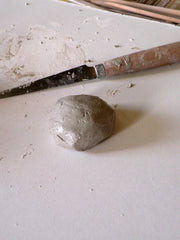
The resulting clay was a little too wet (too much water) but I let it set a bit on my work table and then worked it around in my hands to get it dry enough to shape but not so dry it would crack.


I made lots of beads and lined them up on a bat washed tray.

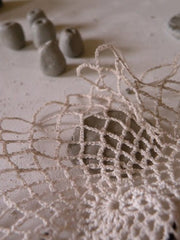
Some of the clay I rolled out into discs and printed with lace to get an interesting texture.

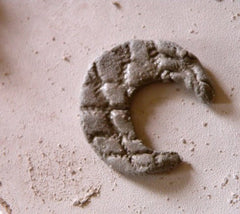
I cut a few crescent moons from the textured discs.
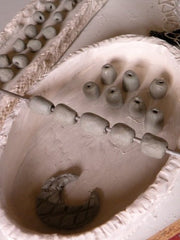
The next day, I tried a second recipe. This one is not in Mitsy’s tutorial, so I’ll give it here:
36 gm feldspar
12 gm kaolin (China Clay)
2 gm bentonite
6 gm Natriumbicarbonate
2-3 gm copper carbonate
12 gm kaolin (China Clay)
2 gm bentonite
6 gm Natriumbicarbonate
2-3 gm copper carbonate
This second recipe was easier to work with, kept its shape better but dried out faster, so I had to work faster.


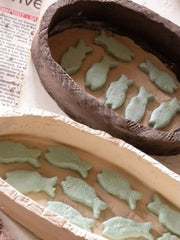
Using a tiny cookie cutter, I cut out fish shapes and loaded them on to the two other dishes.
I fired to 980°C.

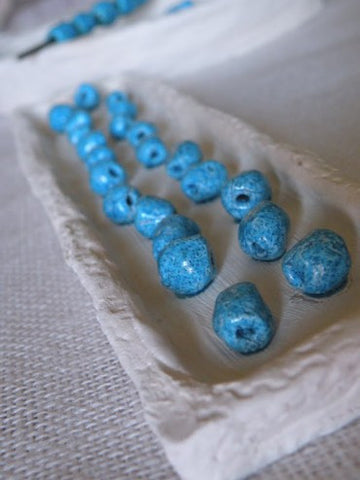
This is what I found this morning. Look at the blue, lovely and shiny.


However, the bat wash stuck where the bead was in contact with it.
The beads on the wire were completely stuck to the metal. I can’t get them off. But I do love the color and the way the glaze pooled at the bottom.
On the other hand, the flat objects, moons and fish did not stick to the bat washed dishes. When I took them from the kiln, they seemed to be stuck, but as they cooled, they came right off.
All of the objects made with the first recipe turned out the same blue.


However, for the fish, the colors go from dark turquoise to a much lighter one. Perhaps I didn’t mix my dry ingredients thoroughly.


The second recipe (the fish) is slightly darker than the first (the moon). I added one extra gram (4 grams total) of copper carbonate to the mix, so I guess that made the difference.
I really enjoyed working with Egyptian paste from start to finish, and when I make more I think I’ll go with the second recipe, and stick to 3 gm copper carbonate. If I want to make beads, I’ll have to get the stilts with metal points for firing. The beads would have been pretty enough to use in a necklace!
SaveSaveSave
2 Responses
Giulia Bonora
March 01, 2021
Hello, I am asking information about the first recipe have you used…What are the ingredients? I like the color of the moon you did it.
Thank you so much.
Giulia from Italy
Leave a comment
Comments will be approved before showing up.
Also in News
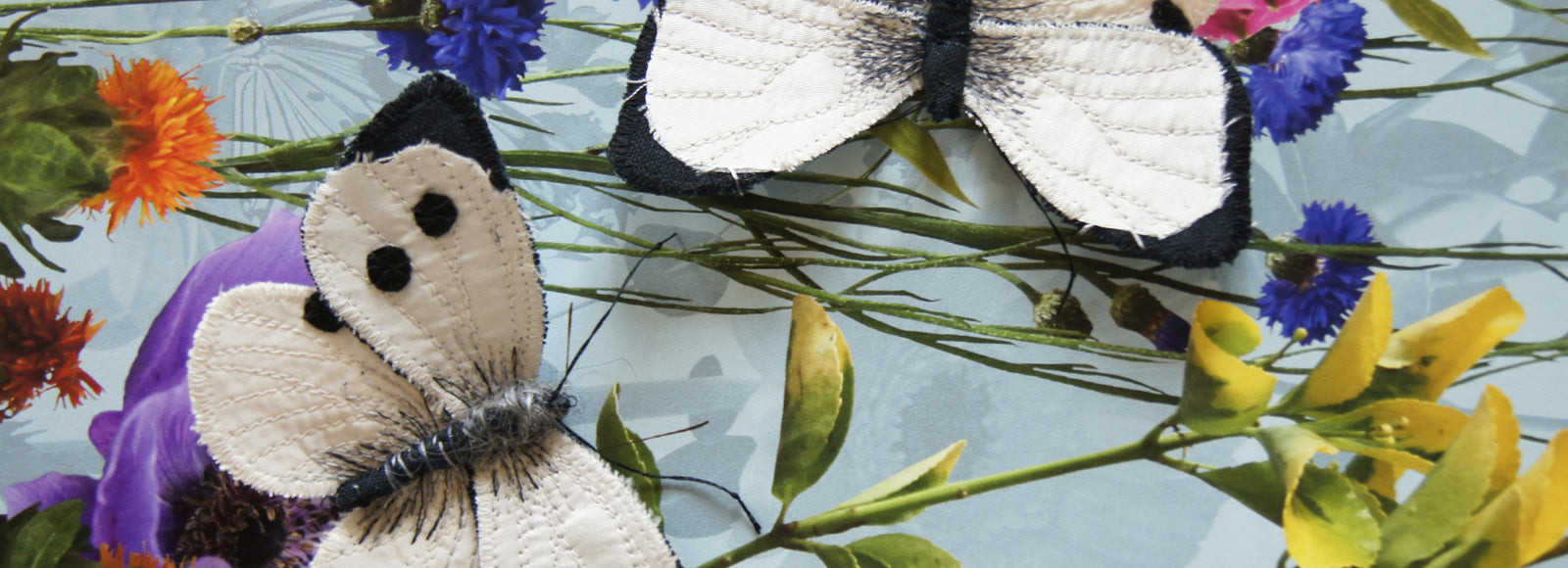
Dear garden
February 22, 2021
And today, she felt agile and unfettered.
No longer leaf-bound.
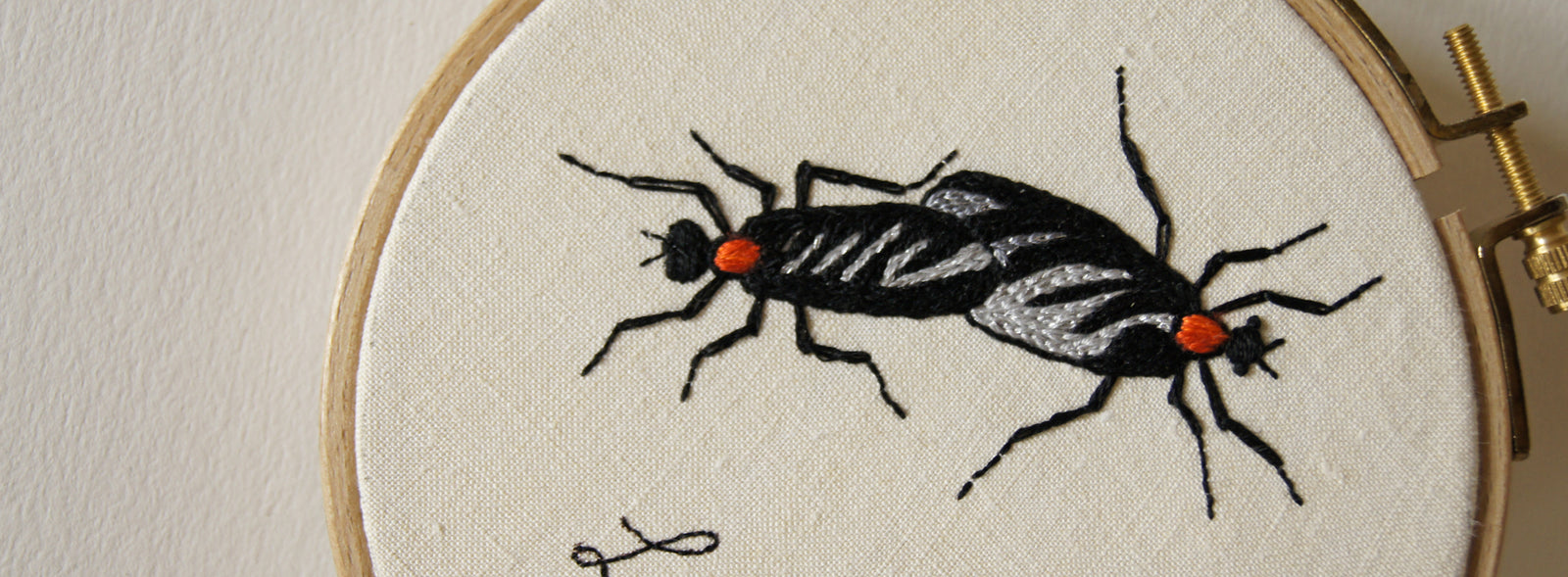
Lupercalia and lighthearted love bugs
February 12, 2021
Since many of us are nudged towards expressing our love through gifts in mid-February (admittedly, we can use all the gifts we can get, or give ourselves, these days) I thought it might be the moment to offer you a lighthearted embroidery pattern.
Read More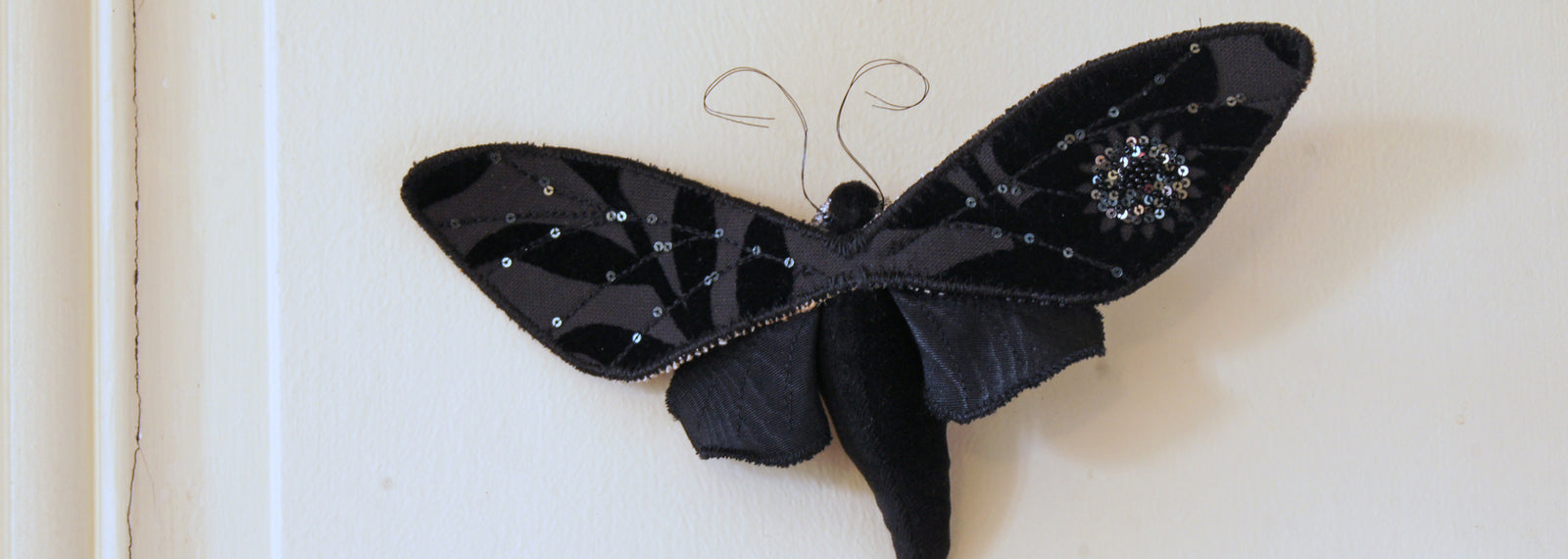
Tell & Show
January 25, 2021
A fear of messing up and wasting the viewers’ time came back each week, until I noticed that it felt fun to get on camera.
Subscribe
Sign up to get the latest on sales, new releases and more …
Recent Articles
- Dear garden February 22, 2021
- Lupercalia and lighthearted love bugs February 12, 2021
- Tell & Show January 25, 2021
- Slow Stitching December 07, 2020
- The Sphinx by Edgar Allen Poe November 01, 2020
- Fabric Moth Tutorial Part 4 October 06, 2020
- Fabric Moth Tutorial Part3 October 06, 2020
- Fabric Moth Tutorial Part 2 October 06, 2020
- Fabric Moth Tutorial Part 1 October 06, 2020
- Bullies, butterflies and other beasts May 07, 2014








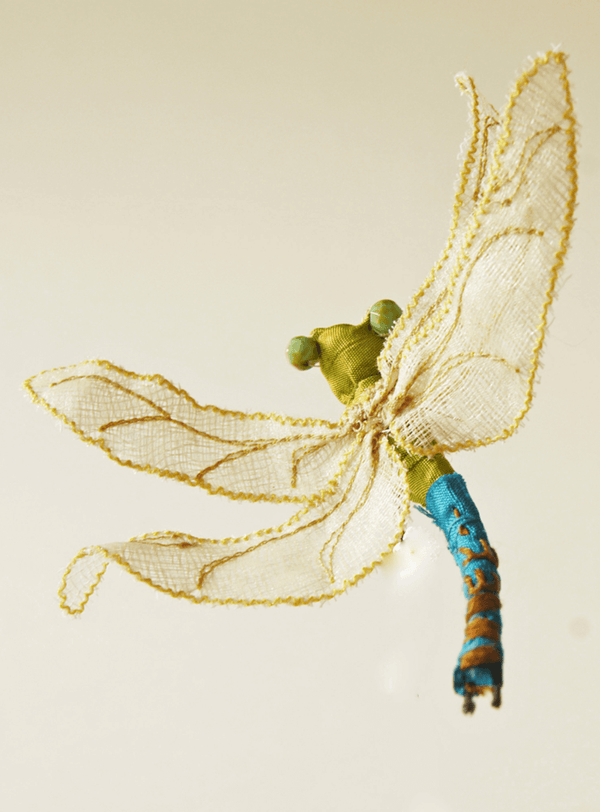
Laura
March 01, 2021
Hi Giulia,
The first recipe is as follows:
39 gm Nepheline seynite
6 gm Soda ash (natrium carbonate)
6gm Soda bicarbonate
6 gm Ball clay
37 gm Flint
2 gm Bentonite
2 gm copper carbonate
I wish you a successful firing!
Laura